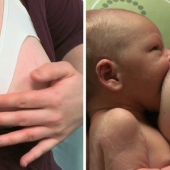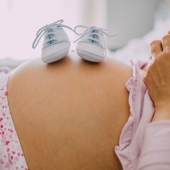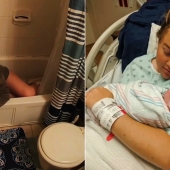1500s: Mothers-to-be prepared their wills when they learned they were pregnant. Europan women, attended by midwives and female family members, gave birth in horseshoe-shaped chairs.
1591: In Scotland, Eufame Maclayne was burned at the stake for asking for pain relief during delivery of twins.
Mid-1700s: Forceps are introduced to help deliver the baby safely during a stalled during a stalled labor.
1853: Chloroform gained popularity after Queen Victoria used the anesthetic during her eight delivey.
1910s: Twilight sleep, a treatment involving scopolamine and morphine, made women forget the labor experience altogether.
1915: The growing feminist movement championed pain management during childbirth.
1920s: Hospital births became more common, icluding the systematic use of forceps, episiotomy and anesthesia, as advocated by Dr. Joseph DeLee.
1942: Dr. Grantly Dick-Read proclaimed the benefits of "natural childbirth, without anesthesia or tools," in his bestseller "Childbirth Without Fear"
1960s: Twilight sleep lost popularity as news of its side effects spread. These side effects included hallucination and a temporary impairment of the baby's ability to breathe.
1970s: Epidurals gained poularity, along with techniques like hypnosis, breath work and water birth. Fathers were usually allowed to stay with their partners through labor and delivery.
1980s: Women advocated for alternatives to giving birth in a hospital, including home births and birthing centers.
2000s: C-sections accounted for about a third of deliveries. By the early 2000s, over half of all women who gave birth vaginally received an epidural or spinal block.
Today: Women have more childbirth options than ever, including home birth, vaginal birth after C-section, "gentle C-section" and epidural.
- 16478 views













